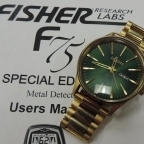Leaderboard
Popular Content
Showing content with the highest reputation on 02/26/2019 in all areas
-
14 points
-
I'm a little disappointed in the lack of West Coast Beach Hunter finds. I see the whole coast line getting slammed with storm after storm and high winds. Is this not the PRIME TIME to be out there swinging exposed layers of gravels and hard-pan? I know there has to be crusty black discs (silver coins) and the gimmer of gold beneath the coil. Show us you mighty few & faithful... as we inlanders are snowed in and football season is over. I know there has to be a select handful of hardcore detector abusers out there willing to brave the sharks. I've got me new CA style cowboy boots on and Equinox packed ready to go if the invite comes?5 points
-
The gold bearing greenstone belts of Sudan and NE Africa which launched the African detector boom roughly a decade ago are also found in southern Saudi Arabia. Same geology, same detector results.5 points
-
4 points
-
4 points
-
4 points
-
It finally stopped raining for a couple of days and I was able to get to the farm and try out the new ORX on a couple of old tenant house sites. These old sites date from around the 1930's or so based on the coin dates. They also sit on or near older sites so you are never sure what you will find. Coin deep was too sparky for me on these sites due to the massive amounts of iron and nails. I switched back and forth between Coin Fast at 15.2 and 28.8k, standard settings with iron tone "on". I found the 28.8 frequency to be my favorite. Once while running in 15.2k I noticed a small aluminum brad on top of the ground (about the size of a match head). In 15.2 I didn't get even a peep out of it. I then switched to 28.8 and got a nice loud tone. The separation in the extreme trash was excellent! My better finds for the day was 3 Wheaties, 1 War nickel, 2 Mississippi tax tokens, 1 Louisiana tax token, part of a broken spur, a broken tent tensioner, and one D Buckle. Thanks for viewing, MT3 points
-
Oh, I did forget to mention those giant roachs!!! I really, really hate those the most! fred3 points
-
Roots are actually a separate issue. Quite a few detectors will detected a large root for various reasons. Thunderstorms create a ground potential. Lightning as much leaps up from the ground as strikes downward. I could certainly see this as possibly creating issues in surface weeds. The GPX and GPZ can detect variations in the earth's magnetic field and lightning strikes many miles away. The receiver sensitivity is astounding. Source2 points
-
Here you go Fred. (I had no idea how long this would take . . .) Mountain scenery and that beautiful blue alpine sky. We grow tall mountains around here. The time of year when the bees get busy. Some of the ways the water moves around. All shut down getting ready for the move. Speed-panning wonder! This bedrock is heading uphill at an insane angle. My son trying a little high-banking, but he zeroed in that spot and quickly went back to detecting (just because a spot looks good, doesn't mean it is?). This bedrock has a great chance of hiding something . . . My robust, torquey blue mule. That diesel engine is just starting to get broke in (million mile Cummins wonders). My son cutting his teeth on the Minelab GPX 5000 (I hope his wife still likes me as he has a wonderful case of the fever!?). Look what the Gold Racer sniffed out: small stuff, and chunky pieces too! (The Bug Pro and the GPX accounted for a lot of sassy gold over the two days as well.) Some of the meat to go with the smaller potatoes. I think this picture says it all about the clichés about gold and rainbows. (Shot this picture from an excavation after a summer shower.) All the best, Lanny2 points
-
We don’t like to brag and show off our pull tab and bottle cap collections. Um....I don’t know what to say about those bootdals/sandoots but I’m with Ridge Runner on this one.2 points
-
Cane toads are nothing. Probably the only thing that freaks me a little while out in the bush is walking into a golden orb weavers web. They're not a little spider and their web is fairly strong so you tend to spend the next 10 minutes looking to make sure the spiders not in your hair or on your shirt. Although I do think they are relatively harmless. https://en.wikipedia.org/wiki/Golden_silk_orb-weaver The big inch ants are the other thing to watch out for. The suckers have big nippers that they use to hold on while they sting you with their tail. And they really hurt! https://en.wikipedia.org/wiki/Myrmecia_forficata2 points
-
Dang Pat you shouldnt have brought up the bears down there!!! The limbs are bad enough....2 points
-
Welcome to the forum - that is some very impressive gold! 2014 USGS Report - The Mineral Industry of Saudi Arabia "Gold.—In 2014, MGBM operated five gold mines in Saudi Arabia and mined 3.86 Mt of gold ore compared with 3.28 Mt in 2013; it produced 4,789 kg of gold in 2014, which was a 15.2% increase compared with the 4,158 kg of gold produced in 2013. Most of the increase was attributed to the entry of the As Suq Mine into production in March. Production by MGMB included about 1,506 kg from the Al Amar Mine, 1,685 kg from the Bulgah Mine, 1,066 kg from the Mahd Adh-Dahab gold mine, 449 kg from the As Suq Mine, and 84 kg from the Sukhaybarat Mine. The Al Hajar gold mine in Asir Province, which produced about 25 kg of gold in 2013, was mined out and closed and MGBM was exploring for copper and zinc in the mine area. MGBM was on track to increase its gold production to 15,550 kg (reported at 500,000 troy ounces) by 2017. Production increases were expected at all the company’s operating gold mines but most of the projected increase in gold production was expected to come from the Ad Duwayhi Mine, which is located in Makkah Province. The mine was expected to produce 2,177 kg in 2015, 4,354 kg in 2016, and 5,598 kg in 2017 (Saudi Arabian Mining Co., 2015a, p. 12, 69–72, 104–105; 2015b). JORC-compliant estimates of gold resources in the Central Arabian gold region of Saudi Arabia were about 272 Mt grading between 0.82 and 8.14 grams per metric ton (g/t) gold. Ma’aden’s Masarah gold project was part of the development in the Central Arabian gold region in 2014, which had a deposit containing about 22.3 Mt of resource at an average grade of 2.19 g/t at a cutoff grade of 0.8 g/t gold according to the prefeasibility study (Saudi Arabian Mining Co., 2015a, p. 104)." Placer gold deposits in the Hofuf Formation The Eastern Province of Saudi Arabia (large pdf report with color photos and many charts. 1981 USGS Report - GOLD PLACER AND QUATERNARY STRATIGRAPHY OF THE JABAL MOKHYAT AREA, SOUTHERN NAJD PROVINCE, KINGDOM OF SAUDI ARABIA2 points
-
2 points
-
Some got it and some got to go get it . With that foot ware I wouldn’t be caught dead in . Chuck2 points
-
They seem most likely to randomly drop limbs when it is stinking hot & calm. Obviously in strong winds & storms they come down, but those hot calm days I have been out bush and heard them crashing down. You would be bloody unlucky to get hit with one, but you never know.2 points
-
2 points
-
This NOAA website Interagency Elevation Inventory shows where, and what kind of LIDAR the U.S. government agencies have available. There are links to the mapped data downloads. Most of the green areas on the map are only about 3 foot resolution so they may or may not be an improvement on the existing DEMs. Open Topography is another good source for free lidar data. It's more international in scope. The Tahoe Basin Lidar set is very high resolution as PG-Prospecting pointed out. It looks like there are several nice sets in New Zealand. You can directly download a selected area at this website. You will probably notice that the coasts have some pretty good LIDAR coverage and quality but the west has been pretty much left out of the feds LIDAR efforts. It's always a good idea to check your State's GIS office to see if they have different coverage.2 points
-
I'm no subatomic particle physicist, but I am a vegetarian, and I haven't noticed any more charged particles than usual in my salad. Sorry Frozendaze, but I just couldn't resist!? Seriously though, I'm in the same neck of the desert and I haven't noticed anything out of the ordinary when swinging the Zed through the green stuff.2 points
-
Threshold blanking or nulling tells you two things if you choose to run the threshold where you can hear it. First, rejected items will blank or null as the coil passes over them. You know you have encountered a rejected item.Too much of this may alert you to a need to increase the recovery speed. On clean ground excessive nulling means you need to check your ground balance and sensitivity setting. An incorrect ground balance will throw off lots of ferrous signals, and if you have these rejected the machine will null constantly. Check the ground balance first. If this does not fix things, you may want to reduce the sensitivity setting. Excessive “blowback” from ground signals can cause target masking. These reasons are why I prefer to have a threshold sound - it keeps me better informed as to what is going on under the coil so I can adjust accordingly. Great post Mitchel!2 points
-
Golden Grams of Goodness: Part 1 November is not usually a time of year that I get to chase the gold, as by the time November rolls around the ground usually requires some dynamite or some equally powerful force to break through the frost to get to the gold. However, this year has been a year of exceptions. In September, we had early snow and frost with well below seasonal temperatures that carried into October, and that doesn't happen very often as usually the weather is rather mild. However, after the early blast of Arctic bad temper, the weather shook itself out until the first week of November with temperatures soaring above average, so this allowed the chance to engage in some gold sleuthing when normally I'd be reduced to only dreaming of chasing the gold. I have two sons, and the eldest loves to chase the gold, while the other will chase the gold given the opportunity, but he doesn't have the same level of passion. Me eldest was with me on this trip, and he was with me on our epic gold adventure when we truly slew an army of nuggets early in the summer (I have yet to post that story), so he was eager to have a chance to hone his detecting and sniping skills. The area we dropped into to work was full of bedrock pinnacles. These pinnacles were formed of an iron-hard bedrock, so hard that the big equipment had negligible effect. In fact, smoke was pouring off the bucket teeth and blades of the excavators as they tried to outmuscle the mother rock. As a result, there was a section of ground about the size of two school buses parked side-by-side, but slightly longer. Looking down into the excavation, there were three pools of standing water as well as a small stream of clear seepage water running diagonally across the northern, more elevated end of the bedrock. The southern end was where the largest pool of water was, and the eastern side of the excavation had a culvert that was collecting the water from the stream to then divert it through a long series of interconnected culverts to a sump where a six-inch diesel-powered pump was working night and day to keep that sump cleared. Over the entire area of exposed bedrock, there were many buried, small gutters with high, then lower humps, and throughout the area, there were those dark pinnacles of super-hard bedrock, some of them rising up almost four feet, resulting in an area that could not be cleaned out properly by the modern miners with their big equipment. The area was perfect for detector and sniping work, making it a perfect area for us to tackle. To be continued . . . All the best, Lanny1 point
-
I've only had my 800 for about a week, so I made some simple ID cards using Steve's graphic, to get familiar with the machine. I have extras, and with Steve's permission, I'm offering 1 to the first 50 interested. These are simple, pocket size, laminated cards, with large bold font. Target IDs on the front, detector settings menu on the back. Edit 2/19/19 by Steve Herschbach. The offer to mail you one of these free is long past. Just download the pdf, print, and laminate your own. idcardfinal.pdf1 point
-
I finally took the plunge and bought a 6-inch coil for my Equinox 600. Friday I had a chance to hit a park before work that has been thourougy searched many times. Second target of the day was a dateless SLQ! AWESOME! I also managed to pull a ‘53 wheatie before I had to start my workday. Today I had more time to spend with my new toy. And, it paid off. I visited three sites, all places with concentrations of ground trash, trees, boulders, etc. I ended the day with six wheaties, ranging from 1921 to 1957, a 1912 s Barber dime, and a junk pendant - plus $1.35 in clad. This coil ROCKS! Glad to have it in my arsenal. It won’t be my everyday coil, but it definitely will be well used.1 point
-
Australia is full of things that bite and sting but all jokes aside, if you got worried about every little thing , you'd never leave the house. You have more chance of being hit by a car than getting seriously hurt out in the bush (as long as you use common sense). I wear snake gaitors sometimes, especially if wearing shorts. Not only for the snakes but they give protection against some of the undergrowth.1 point
-
Just talked to steve over the phone, asked some questions about the shafts, steve will take the time to tell u everything about his shafts customer service is above and beyond. Ordering my shaft today cant get here soon enough.1 point
-
I really hope you got some leather chaps to go along with those boots or else people might look at you weird ?1 point
-
1 point
-
I've found several key date silver coins over the years, and a rare gold coin, but I don't really ever plan to sell my coins I've found.. If they already have environmental damage, I try to make them "presentable". Depending on their condition, I may do anything from a simple light baking soda rub, to Ezest. True once you clean them you cannot go back, but on the other hand, if you never plan to sell them, and want to enjoy them, do as you please in my opinion. The best preserved silver coin I've ever found was a 1906-S Barber dime at a park demo in San Francisco several years ago. As soon as I popped it out of the ground, I couldn't believe how pristine it was, it looked like it was dropped the day it was minted. I did nothing but rinse it off with water to clean it. I had some free PCGS gradings and decided to send it in with some other coins for grading. Not only did it not get a cleaned or environmental damage label, it came back graded as a MS60, common date, but at that condition it's a $300 coin. Bummer none of the key date silvers I've dug were that clean, but it is what it is. At the end of the day, if you really think about it, the odds are so stacked against us to even find a key date coin to begin with it's staggering, add to that the likelihood of environmental damage and when you finally do find a nice one, it's like winning the lottery!1 point
-
Even though I carry newbie juice in my finds pouch, I still have a habit of using the old fashioned oral cleaning method ? Ironically I don't think about cow pee when putting the coins in my mouth Thanks for watching Gerry, I need to test out the Equinox 800's prospecting mode, I like your find a lot better then mine!1 point
-
My note was more generic in nature and not aimed at Beach Mode specifically. That said, I am not aware of any “disabling” of ground balance in the Beach Modes. I would think the regular beach hunters would have noticed such a thing and been all over it way before now. I honestly do not know as beach detecting has been the area I know least about on the Equinox. I just did a "quickie test" and it does appear changing the GB setting while in Beach Mode affects no change in ground response. I will drop a note to somebody that knows more than I do to see if I can get a comment. One of our forum members also commented on Findmall that he thinks Beach Mode is "locked" into a "0" setting. "11. Beach mode -- despite higher frequency weighting -- did not offer improved detection of high conductors, as I thought it might. One reason, I believe, may be that because ground balance is "locked" to zero in beach mode (which I did not know until today), and with my test-garden dirt balancing in the high 40s to high 50s, this was too much of an "offset" from the fixed "0" balance for beach mode to "shine" in this case (my guess)." (emphasis added). This was posted to several forums a year ago. The latest version of the Equinox Owner's Manual still mentions ground tracking as a potential option in Beach Mode on page 41. "Tracking Ground Balance can also be useful when using Beach Mode 2 underwater at the beach (in salt water)." Equinox For Beach & Water Hunting1 point
-
Hi.. We're going to need a bit more input from your chief machinist: Upon which scale is " 33 " based?, meaning Rockwell A, Rockwell B etc., not bathroom or gram.. The machine and method used too please.. It should be mentioned the " 33 " could be inexact regardless which scale was used, primarily due to during setup for greatest accuracy a painfully flat standardized material is used.. It takes only a slight variance at the subject test point to throw off the reading 10 points.. Just saying, while assuming accuracy.. I have no idea what " ID = 12 " is supposed to represent.. Not wanting to be a bummer here, merely pointing out we're still missing some vital information to name it and claim it.. Here's a couple charts that hopefully will be helpful up the road: Swamp PS: Gilding Metal = 95% Cu, 5% Zn..1 point
-
1 point
-
Gerry, If those are your boots, I shudder to think what your horse and saddle look like. ? Rich (Utah)1 point
-
Very nice save TMox. Please give us the story with that Seated save. Key Date coin too (low mintage 80K) makes it even more desirable.1 point
-
I have dealt with this somewhat. A plant, shrub, or tree root with a high water content, can run somewhat irratic. Also slow you down and have to check out some possible targets a few extra sweeps to rule them out. Lowering the sensitivity slightly helps. Along with a slow coil sweep. But in my instances, this issue seems to be more prevalent when thunderstorms are nearby.1 point
-
1 point
-
1 point
-
Gerry, You just made me find an allen wrench and take my handle off for the first time in over a year. I was surprised to find no sand and no corrosion. I just screwed it back together it was that clean. Good tip for some I think. Mitchel1 point
-
https://metaldetectingforum.com/showthread.php?t=50864 One problem I can anticipate is White's boards do change over time as component availability changes. The ultimate source for this sort of info is the Geotech Forums1 point
-
1 point
-
On the contrary, I thought his video was very interesting and contained a lot of useful information.1 point
-
Golden Bonanza Days, Part 2:In the meantime, I’d finished all of my adjustments on the Racer, and I went off to investigate a different spot, some way off in the excavation from the area my son was detecting, as I had seen some little pockets of intact channel that had some spidery cracks in the bedrock running outward from them on my initial walkthrough. After a few swings (no kidding), I had the coil over a soft sound. A bit of scraping later, and I’d trapped the signal in my scoop. Into the pan it went. (Now, please remember that I use a super-magnet on an extendable wand whenever I detect bedrock [worked recently or anciently], so it really helps eliminate ferrous trash, and this means that any target that goes into the scoop is non-ferrous.) After a few more swings, I’d hit on two more targets that went into the pans for my wife’s speed-panning operation. Then, a slew of targets went into the pans.Meanwhile, as I was collecting signals, my son was busy adding more targets to his pans. (I had two pans to fill, and he had two pans for target material as well.)During our nugget hunting, my wife set up her panning station in a convenient bedrock pool of crystal water, water about the temperature of glacial meltwater by the way, and she was ready to get her panning gloves wet (she uses those little gardening gloves that have rubber palms and fingers with a canvas back as they insulate well enough to take the sting out of the coldness), so she wandered over to my son to gather a pan of possible goodness, and she swung by me to grab one of my pans too.(To describe the site in more detail, there was a sloped ramp that led down into the excavation where the rock trucks had run back and forth to be filled by the excavator. There were the remnants of a pad by the ramp where the excavator had sat during the last scraping of the dirt for the last cleanup, the pad having been moved up above the level of the excavation so the last of the pay could be scraped from the bedrock.In opposition to this, the far end of the excavation had been worked first, the work proceeding backward in the direction of the exit ramp until the cleanup reached that location. What remained in the excavation or open-pit site were ridges of rising bedrock, deeper excavated low-lying areas where the bedrock was soft [or areas of contact zones where soft bedrock met hard] or where ancient channel material had gathered in natural gutters or larger crevices, and there were pools of standing water [I always check these with a waterproof coil] where seepage had found a way to fill depressions or where runoff from springs on the margins of the excavation had filled low spots. On a related note, some of the bedrock had been bent and warped by tremendous geological forces in the past, and these places held little concentrations of material left over from when the bedrock was super-hard enough to resist the might of the excavator’s bucket.In a few places there were small sections of friable rock [in this case slate] that when found, I always detect first, then later pan as those plates of perpendicular placement [in 90-degree opposition to the underlying bedrock] act as excellent gold traps, traps that were working in earnest as the dinosaurs plodded across the ancient streambed when large sections of the planet were in a more tropical state.As well, there were those aforementioned contact zones, always excellent places to detect as small slices of the softer rock were sometimes in place against the harder rock, or there were ledges, sometimes terraced, with bits of material intact, and these traps often produce some nice gold. [On a related note, I learned a long time ago to trust my detector, not my eyes when scouring bedrock. What I mean by this is that oftentimes bedrock appears to be solid, especially when is is of uniform color, so it seems a better use of time to detect areas where visible intact material is concentrated, but this is one of Mother Nature’s grand deceptions, whether the bedrock has been worked by recent miners or mother rock worked by the Sourdoughs.Mining tip for the rookies: always, always, always take the time to go slow to let the detector read the bedrock contours and surfaces, to check the little invisible gutters and pockets, and yes, to find the hidden crevices that snapped shut when some monstrous dinosaur tromped on it while crossing, or more likely, when some massive boulders tossed along those streambeds, by some titanic hydraulic event, forced their will upon the yielding bedrock.To be continued . . .All the best,Lanny1 point
-
This is the whole point of this thread, you need something like the B&Z to deliver better quality audio to your ears that the WM12 using its own speaker in combination with the Target Volume cannot do. IMHO the Target Volume controls of the GPX and GPZ are too coarse to give effective audio volume control, either through a directly connnected speaker to the battery on the GPX or the inbuilt speaker of the WM12. JP1 point
-
Lots of misinterpretation in this post Steelphase and most of it is aimed at continuing the marketing ‘story’ behind the sales pitch that now seems to be taken as ‘fact’ because its been said so often. The GPX machines have filtering in them that condition the audio, its called Boost, Quiet, Normal, Deep, these are audio profiles designed by Minelab to make the audio sound different and perhaps improve personal preference and performance, you will note it is not included in the GPZ. These audio profiles are generated from the raw signal of the detector before being delivered, so could be considered first pass not conditioning after the fact. A ‘booster’ is required to amplify the audio because the audio out of a headphone jack just does not have enough grunt to power speakers, any amplifier can do that. Not all amplifiers do this well though, especially when the audio needs to driven louder in noisier environments. The audio out of the detector is provided as a whole unit with everything mixed in, I’ve spent enough time in video editing environments to know what a hassle it is to try and remove certain frequencies without the audio ending up sounding awful because of poor original audio recording. You have to look at the audio supplied from the detector as being ‘whole’, because once the detector has formed and delivered that audio there is very little you can do to change the underlying fundamentals. Filtering can remove or change certain frequencies which will change the overall way the audio sounds but you will always be affecting the whole audio supplied from the detector thereby negating the way the audio was originally delivered in its pure form. (I’m not saying this is a bad thing, just pointing out the restriction of trying to manipulate a delivered audio that has warts and all, and also the risk associated with changing something which will always has a flow on effect both negative and positive). My complaint of the Minelab audio is to do with the volume controls and how they affect the way the audio sounds, in the case of the GPZ the threshold sweetspot is 27 unless you use too much Audio Smoothing and Volume settings (Volume = Target Volume). Using the detectors volume controls are my main complaint because they are too steppy and coarse. For MAX performance, something that takes priority in everything I do, I always use the GPZ with the Audio Smoothing on OFF (Audio Smoothing = Stabilizer on GPX), this is the point where the noise floor of the detector is at its lowest point, where you get the MAX amount of target information with zero FILTERING, in essence RAW information with no colouring. If you introduce Audio Smoothing you then tell the detector you do not want to hear any audio below the filtering point, this audio can then not be recovered because it never made the cut to be included into the audio train in the first place, no amount of volume or audio conditioning will bring it back. What I am often seeing with people using Enhancers is they tend to introduce Audio Smoothing to soften or quieten the audio to make it sound more pleasing, because of this they then introduce even more Target Volume because they can’t hear the audio because of the muffling caused by the Audio Smoothing, this in effect causes a cascading of detector behaviour ending up with only shallow targets being prominent because when the coil passes over them they crash into peak signal almost instantly, in essence the GPZ is now just a souped up SDC. The audio provided by the Minelab machines is perfectly fine, it is designed well and sounds great, if however you go to town using the target Volume then things start to deteriorate. The key is to start from a stable point and then introduce volume, I prefer to do this via the B&Z but any decent booster that can deliver good amplification without distortion will do the job. The Target Volume control however has a tendency to zoom in on the threshold magnifying every little bump and jump in the threshold, operators running much past 8 on the GPX and GPZ are introducing all the minute little variations created by surface signals which then drown out the broader deeper signals. I feel every point above 8 on the Target Volume is like increasing the sensitivity by 2 points. Sensitivity above a certain point does not do much for deep targets if anything it can hide or mask them. This is extremely important if you are using the raw information provided by not using Audio Smoothing. IMHO a booster should sound crisp and clean, it should not colour the audio provided by the detector but instead should remain true. For best performance you should only ever use the booster as a VOLUME control not a sensitivity control, with that in mind you should always set the detector to be smooth and stable and then only ever amplify that smooth stable audio as cleanly and without distortion as possible. I use the word COLOUR in reference to anything that makes the audio sound different to what is delivered by the detector. Minelab machines have plenty of ways to make the audio sound different, there is Threshold Pitch, Audio Smoothing, Target Volume & Threshold. Saying or suggesting Minelab do not prioritise audio is just plain silly, the constraint is in the many ways a person can go about using the audio because of individuality, how we hear audio is very personal and as such impossible to design for. The intent behind this post is to bring to peoples attention the need to make sure the audio settings of the detector do not end up compromising performance especially in the case of the GPZ. JP1 point
-
Golden Bonanza Days, Part 1:I got the call last season for the chance any nugget shooter dreams of.A friend of mine owns and operates a large placer mining operation. They had been working an ancient channel deposit (60,000,000 years, plus or minus, but hey, what’s a million years here or there, right?) and as I wrote this account, they were in the final stages of moving all of their heavy equipment to anther site. So, I got a call that people usually only dream of ever getting.I was invited to bring my family to nugget shoot a section of virgin bedrock. After sixty million years, it was finally exposed to the sun’s rays once again, and as the entire mining operation was shut down, with no active mining in progress for the changeover, my buddy wanted us to come and check the bedrock for him before they had to do the reclamation work and bury it once more for perhaps another sixty million years.I couldn’t believe it! What a chance, perhaps the call of a lifetime . . .I called my son, who I’ve been training how to detect sassy nuggets, and he said to count him in. My wife, who is a speed-panning wonder of target-rich scoop dirt, said she was in too. So, we packed our gear and headed for the mountains.For whatever bizarre reasons the weather gods had last winter (2017-18), the weather was terrible right up until the first of May, and then it was like someone hit the sun-and-warmth switch for instant summer. The transformation was surreal and wonderful. Fresh pine heavily scented the valley. A wide variety of mountain song birds were back in force, the flowers were blooming on every slope, wild honey bees, heavily laden with pollen, buzzed a honey-hunter’s symphony. While high above, the hawks and eagles choreographed their ageless aerial ballet as they rode the invisible thermals of the cobalt blue expanse. In addition, red-throated, as well as iridescent green-breasted humming birds initiated impossible angles of changing flight as they darted from spot to spot while visiting the innumerable mountain blossoms. To say it was breath-taking is a feeble attempt to capture the impossible, and those of you that frequent the wild reaches of the Rocky Mountains already know of what I speak.We set up our gear, and I unpacked the feisty Makro Gold Racer and connected my shiny new sniper coil. I was going to take the Racer for a hard run, as I was still getting used to it, and with all of the ancient cracks and crevices exposed, I believed it had a good chance to sniff out some gold. The other nugget shooter, my son, would be learning more lessons on the Gold Bug Pro. (For final clean-up, I always check the bedrock with my GPX 5000 after running the legs right off of the VLF’s.)So, I set my son up with the Gold Bug Pro, outfitted with the 5X10 elliptical DD. I reviewed the basics of the detector with him (I love how quick the learning curve is on the Bug Pro), and off he went to a corner where the bedrock rose steeply, a jagged wall of bedrock rising close to 45 degrees up from the floor of the excavation, and that bedrock was iron hard (similar to some other bedrock we hunted later in the season) so there were lots of gutters, cracks and crevices visible that held intact material due to the hardness of the host rock. My son ground-balanced, adjusted his headphones, then made a few swings. He stopped dead right quick, then repeated a swing. With the numbers on the meter in the sweet zone (40-70 on the meter, if you’re familiar with the Bug Pro, usually depending on the size of the piece of gold), he quickly captured the target in his scoop and dropped it in one of our green plastic gold pans we’d already set out. A few more swings, and he dropped another scoop of target-rich dirt in the pan. Having got off to such a fast start, it looked like it was going to be a good day. To be continued . . .All the best,Lanny1 point
-
That is what is left after a troll chews a tire. Trolls chew tires like we chew bubble gum. They cough those up like an owl afterwards. I dunno shrug HH Mike1 point
-
I find it incredibly weird that Tesoro refuses to put out a statement on their website explaining what is going on. It’s not the Tesoro I used to know.1 point
-
Only have a few hours of Nox under my belt. But who ever designed the audio should get be very pleased with themselves. This machine is a real pleasure to listen to, no audio fatigue what so ever. The tones have a nice full body to them. Especially that Iron tone is spot on. Its there easy recognisable even the deep small stuff. But it doesn't become annoying.1 point


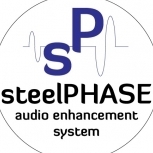


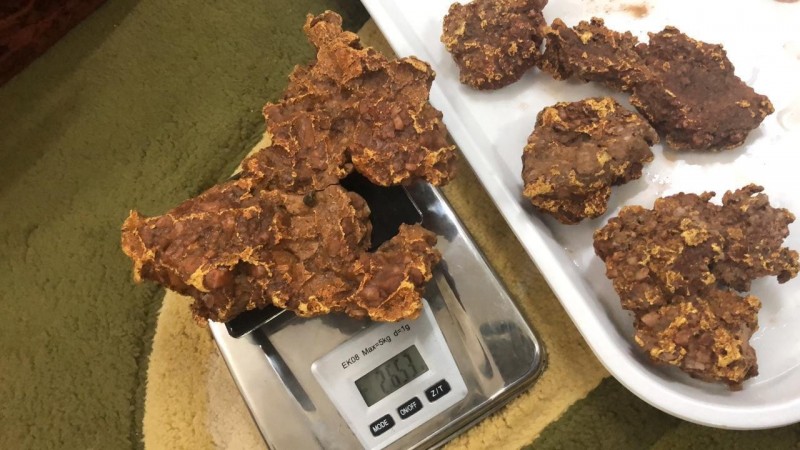



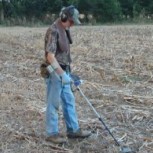

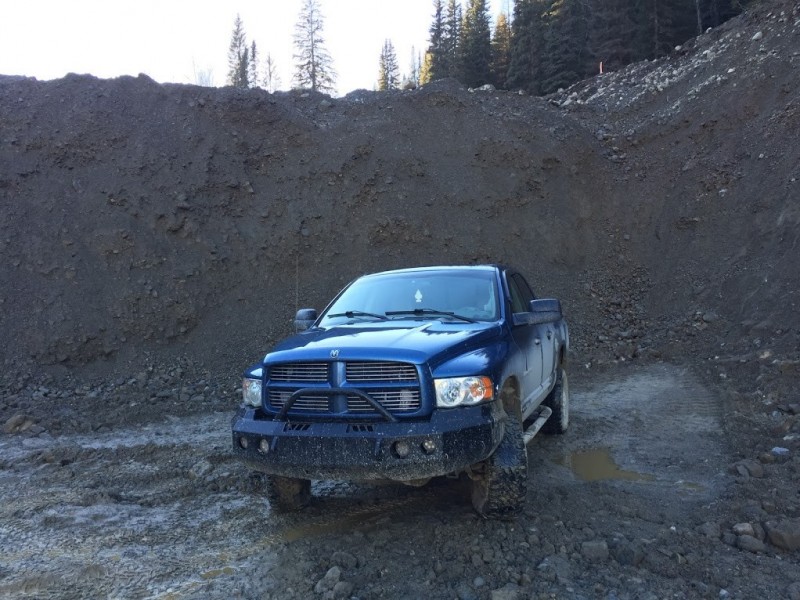
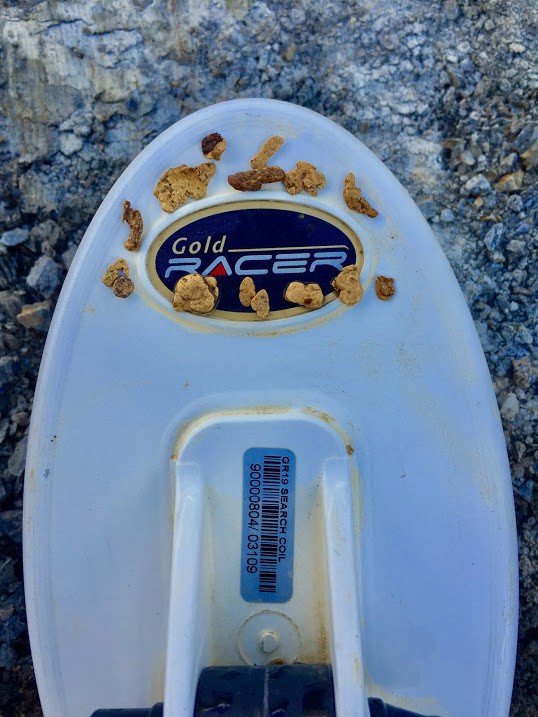





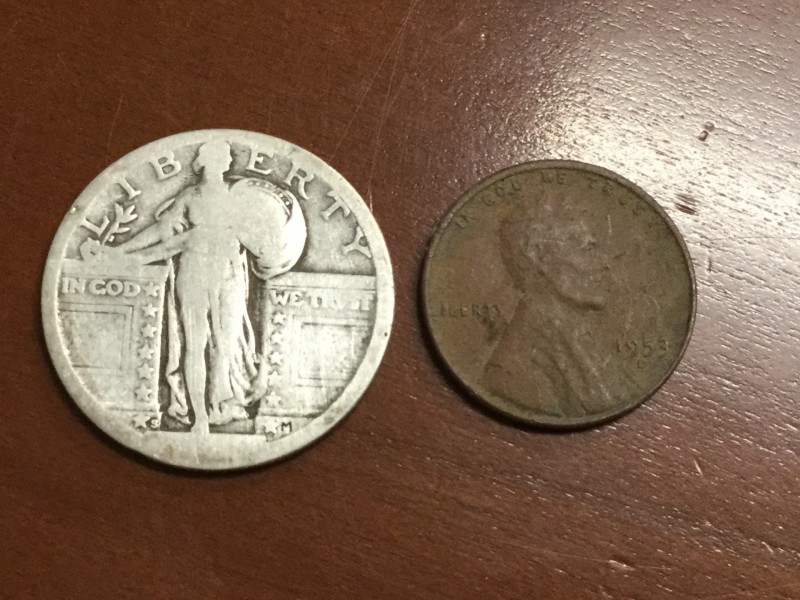
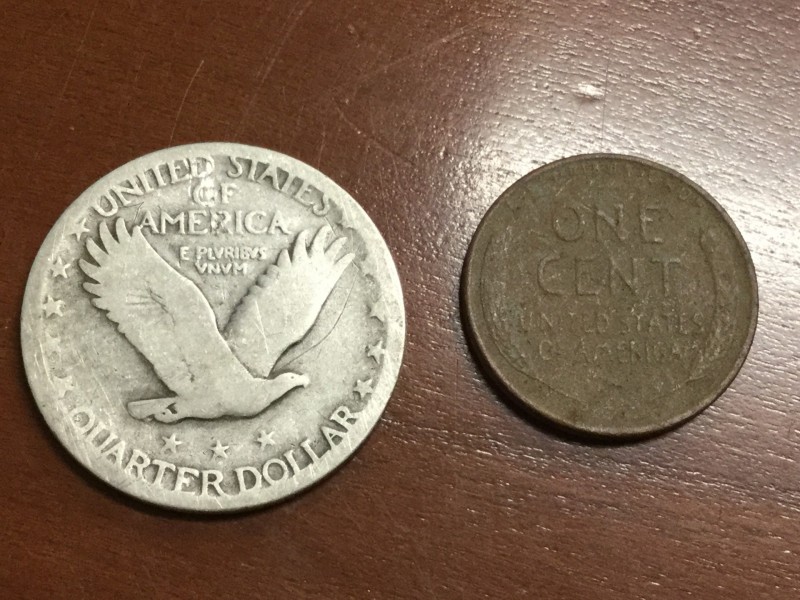
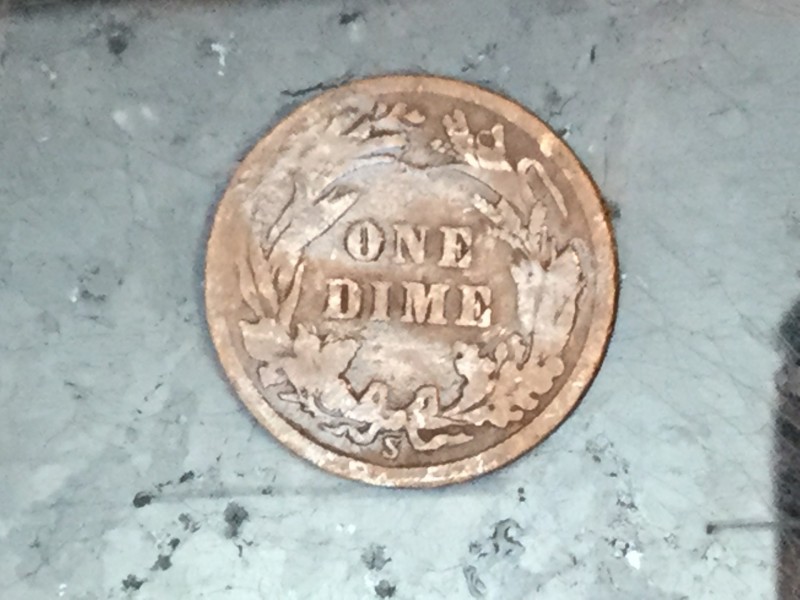
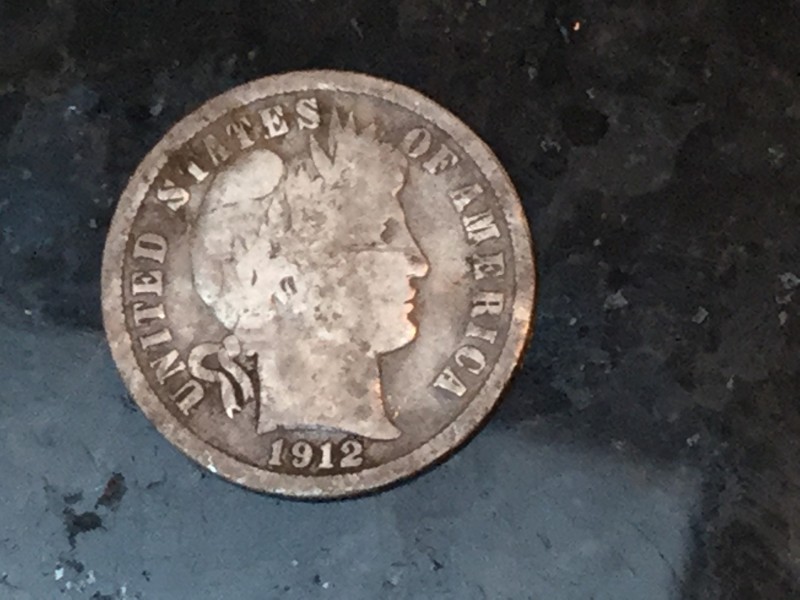
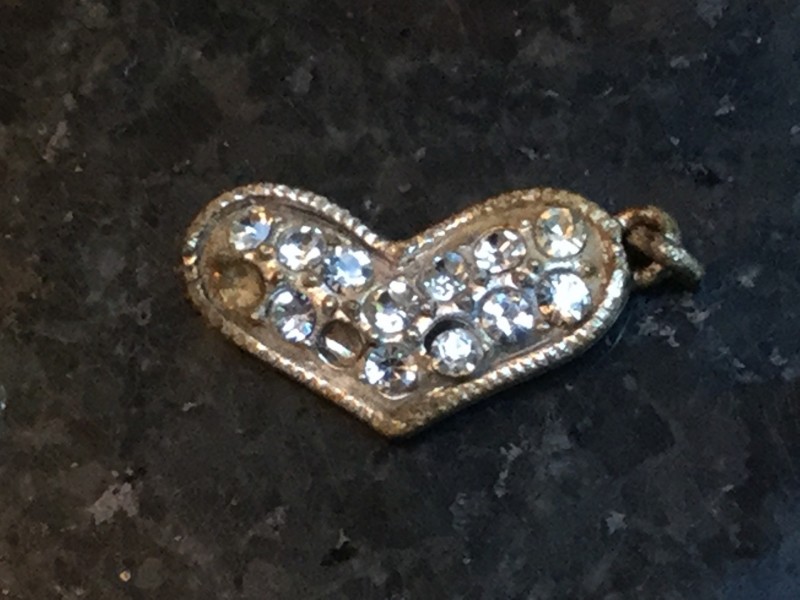
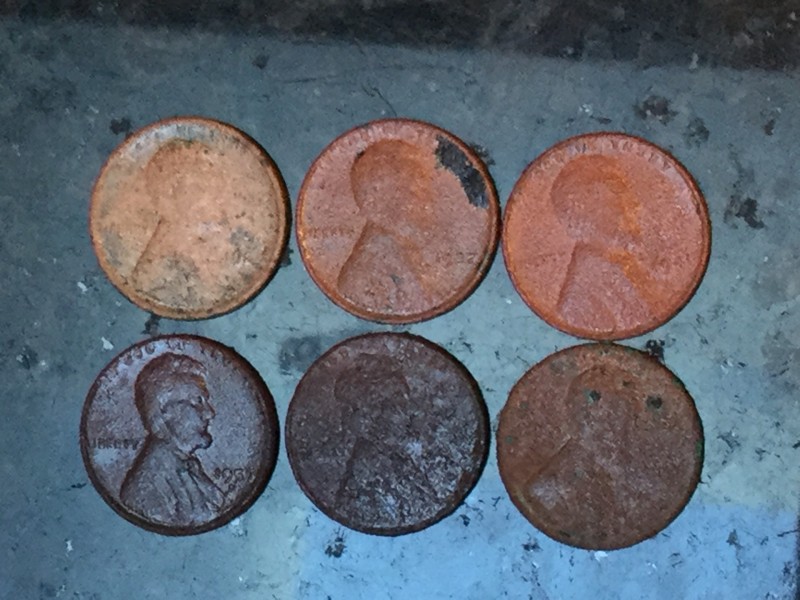
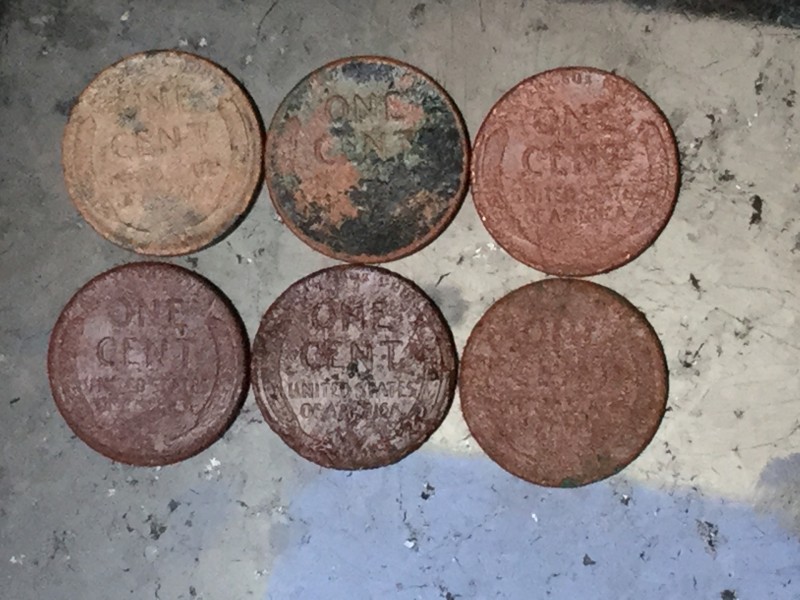

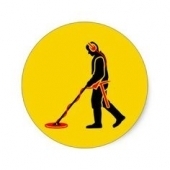
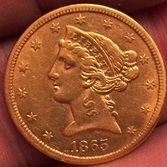


.thumb.jpg.77e4cb5bf39d44bdd2050d2edb7dfdb1.jpg)



